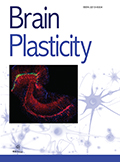Authors: Dubois, Jessica | Adibpour, Parvaneh | Poupon, Cyril | Hertz-Pannier, Lucie | Dehaene-Lambertz, Ghislaine
Article Type:
Review Article
Abstract:
Already during the last trimester of gestation, functional responses are recorded in foetuses and preterm newborns, attesting an already complex cerebral architecture. Then throughout childhood, anatomical connections are further refined but at different rates and over asynchronous periods across functional networks. Concurrently, infants gradually achieve new psychomotor and cognitive skills. Only the recent use of non-invasive techniques such as magnetic resonance imaging (MRI) and magneto- and electroencephalography (M/EEG) has opened the possibility to understand the relationships between brain maturation and skills development in vivo . In this review, we describe how these techniques have been applied to study the white
…matter maturation. At the structural level, the early architecture and myelination of bundles have been assessed with diffusion and relaxometry MRI, recently integrated in multi-compartment models and multi-parametric approaches. Nevertheless, technical limitations prevent us to map major developmental mechanisms such as fibers growth and pruning, and the progressive maturation at the bundle scale in case of mixing trajectories. At the functional level, M/EEG have been used to record different visual, somatosensory and auditory evoked responses. Because the conduction velocity of neural impulses increases with the myelination of connections, major changes in the components latency are observed throughout development. But so far, only a few studies have related structural and functional markers of white matter myelination. Such multi-modal approaches will be a major challenge in future research, not only to understand normal development, but also to characterize early mechanisms of pathologies and the influence of fetal and perinatal interventions on later outcome.
Show more
Keywords: Brain organization, architecture, maturation, myelination, bundles, diffusion tensor imaging DTI, relaxometry, evoked potentials or fields, sensory modalities
DOI: 10.3233/BPL-160031
Citation: Brain Plasticity,
vol. 2, no. 1, pp. 49-69, 2016





